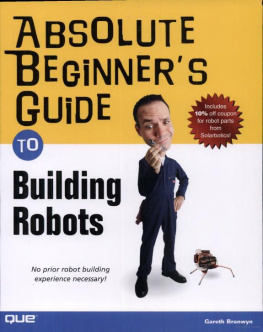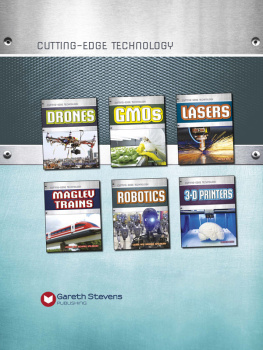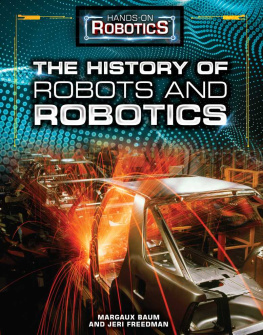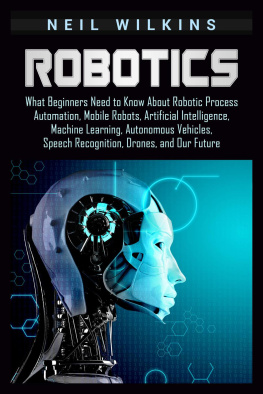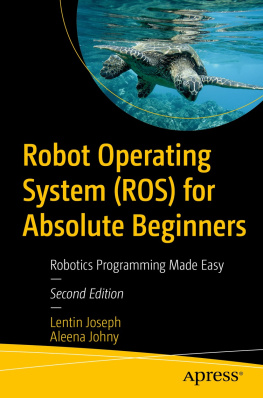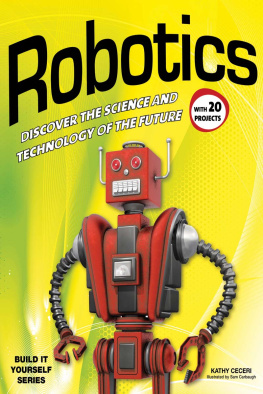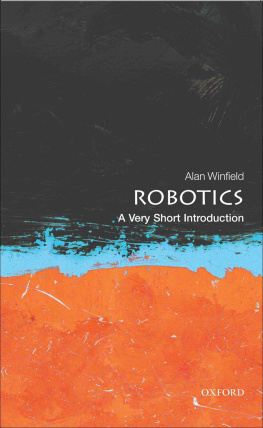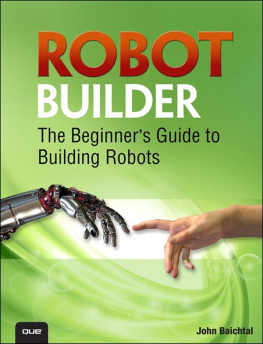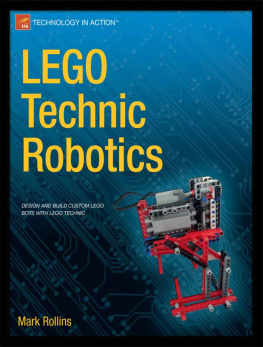Chapter 1. What's in a Name?
In this chapter
A Bot by Any Other Name...
Before we delve into the wonders of robots, and you find yourself up to your lab coat lapels in gears, motors, and sensor arrays, it might be a good idea to try and gain some clarity (no small feat, as you'll see) about what a robot actually is and where robots come from.
So how does one define robot ? Think you know? It's obvious, you say? Tell you what: You go off and do a quick poll among friends, family members, and online chatterbots, while I go fetch a stack of dictionaries. Because one of my other hats is tracking computer and online jargon and slang, I've got lots of dictionaries. Meet me back here in a few minutes...
Okay, so what did you find in your survey? I bet (since I've done it before) you probably got responses something like:
A machine that can do the work of humans.
A humanoid machine that can think and act on its own.
A machine that's self-aware.
A mechanical man that serves drinks at parties.
I can't really define robot , I just know one when I see it.
These definitions aren't exactly right, are they? They speak to some aspects of robots, but they're either too exclusive ("a machine that can do the work of humans" completely ignores recreational robots such as Sony's AIBO) or too sci-fi (machines are not yet self-aware machines, so that definition would mean that no robots yet exist!). It doesn't take long for you to realize that the last statement ("I know a robot when I see one") is where most civilians stand on the subject.
Surely lexicographers, those word nerds who toil away in musty library stacks in an effort to preserve the rigor of our language, have come up with a more respectable definition? Let's have a look and see.
The venerable (and heavy!) Oxford English Dictionary (okay, it's actually the Oxford American Dictionary , but we won't hold that against it) defines robot as
A machine capable of carrying out a complex series of actions automatically, especially one programmed by a computer .
The more blue-collar Merriam Webster Dictionary offers this definition:
1. A machine that looks and acts like a human being. 2. An efficient but insensitive person. 3. A device that automatically performs esp. repetitive tasks. 4. Something guided by automatic controls .
Note
 | Being a "word worker" (editing Wired 's "Jargon Watch" column for nine years), I believe that understanding the names of things and where they come from often goes a long way toward figuring out what they are. These proper labels are also very helpful in doing effective research (using an index, looking up technologies online, and so forth). This might seem obvious, but you'd be surprised. This book contains a useful (I hope), mainly plain English glossary of technical terms and slang related to robots. It should help reinforce what you learn in the text. |
Finally, here's what the American Heritage Dictionary has to say on the subject:
An externally manlike mechanical device capable of performing human tasks or behaving in a human manner .
I could go on (and on). Every dictionary has a slightly different definition, and every one of them is either slightly or way off the mark. Webster's definition is probably the closest to a decent one. It states that robots often mimic human form and function, are often designed to perform tasks that humans would rather pawn off on machines (such as assembly-line production), and are pre-programmed or guided by some type of control system. But as we'll learn later in this book, there are species of self-respecting robots that don't meet any of these criteria. They don't look or act like humans, they don't perform repetitive tasks (they refuse to do dishes!), and they have little in the way of brains (no pre-programmed "maps" of their world, and only the most primitive instructions on how to behave in it).
As mentioned in the introduction, biomimicry the study of nature's designs and processes in search of inspiration for creating machines and processes that solve human problemsis all the rage in robotics right now. The robots skittering and lumbering through today's university laboratories are more likely to look like ostriches or geckos than mechanical men. Embedded systems (also not covered in the preceding definitions) are another area of technological development that can involve robots. Here, computer brains and robot mechanics disappear into the very structure of homes, cars, office buildings, and so forth. Again, think of our pal HAL from 2001: A Space Odyssey . HAL would be an example of an embedded system robotic spaceship. As you can see, both people on the street and dictionaries define the word robot in a way that's too anthropocentric (human-centered), and therefore too limiting for our purposes.
So what does the robotics industry itself have to say on the subject? Here's the definition as presented by the Robot Institute of America (circa 1979):
A reprogrammable, multifunctional manipulator designed to move material, parts, tools, or specialized devices through various programmed motions for the performance of a variety of tasks .
Note
 | Apologies to amateur robotics guru Gordon McComb. The "I just know one when I see it," is actually a quote taken from his seminal 1987 book, Robot Builder's Bonanza . He dedicated it to his daughter Mercedes "who still believes that a robot is a mechanical man that serves drinks at parties." |
Even though this definition is Jurassic on modern technology's timetable (and obviously focused on industrial robots), it is still widely cited and has unfortunately influenced many dictionary definitions.
The Japanese Industrial Robot Association (JIRA) is also chiefly concerned with industrial robotics, but it still went so far as to create a whole robot classification system:
Manually operated manipulators Machines slaved to a human operator (think Ripley strapped into the robotic exoskeleton loader in the film Aliens ).
Sequential manipulators Devices that perform a series of tasks in the same sequence every time they're activated (a phone switching system).
Programmable manipulators An assembly-line robotic arm.
Numerically controlled robots (also known as a playback robot ) Robots that are instructed to perform tasks through the receipt of information on sequences and positions in the form of numerical data. Such robots are typically used for making precision machinery.
Sensate robots Robots that incorporate sensor feedback into their circuitrytouch sensors, proximity sensors, vision systems, and so forth. (The robots we will construct in Projects 2 and 3 fit into this category.)
Adaptive robots Robots that can change the way they function in response to their environment. Today's most sophisticated robots fit into this category.
Smart robots Robots that are considered to possess artificial intelligence (AI) . Whether or not any robots like this yet exist depends on how you choose to define AI (and you think robot is hard to define!).
Intelligent mechatronic systems Mechatronics ("mechanics" plus "electronics") is a fancy word coined by the Japanese in the 1960s to refer to the intersection of mechanical and electrical engineering and computer control systems. Here it refers to smart devices and embedded systems, such as the highway traffic control "robot" mentioned in the introduction.

